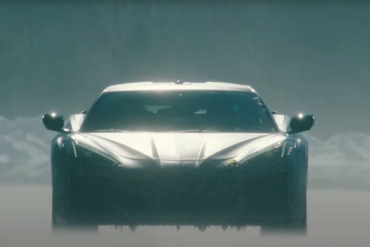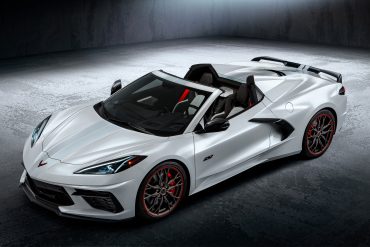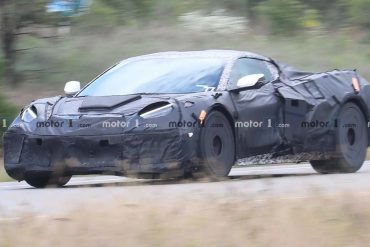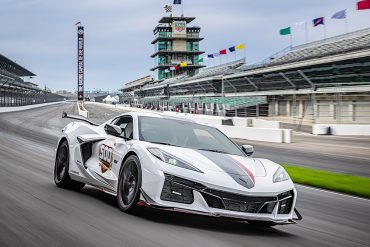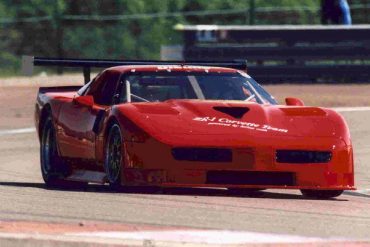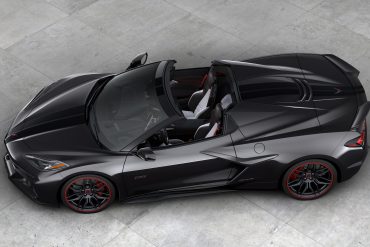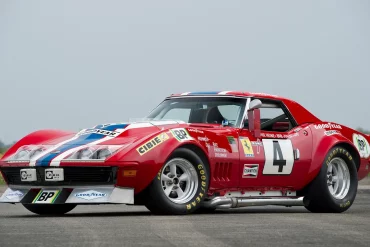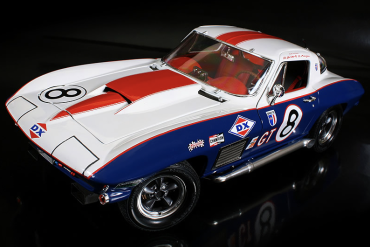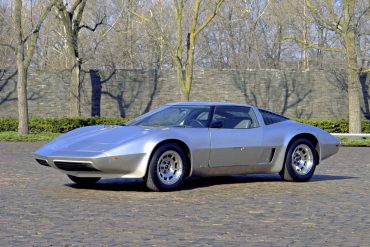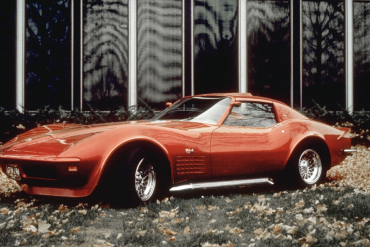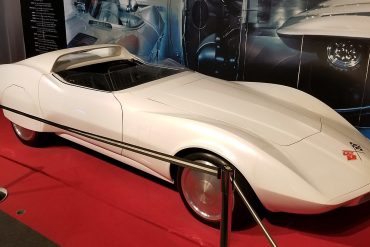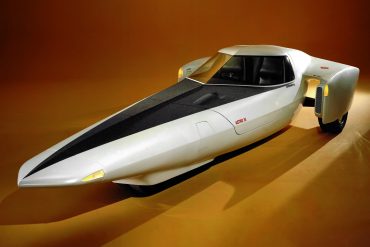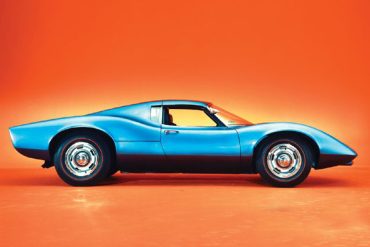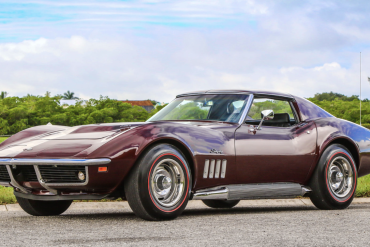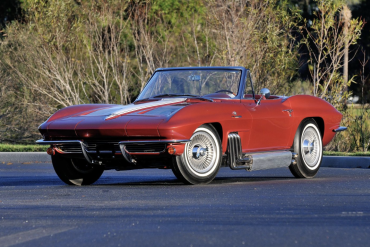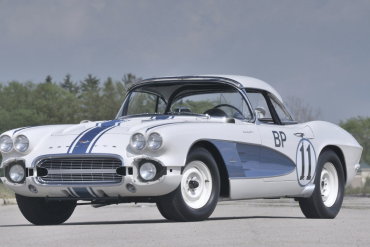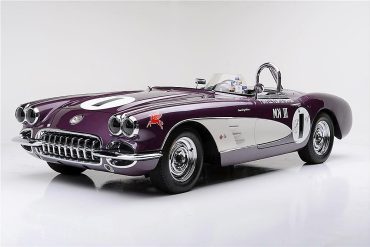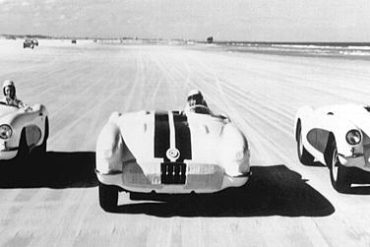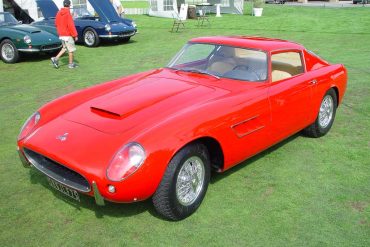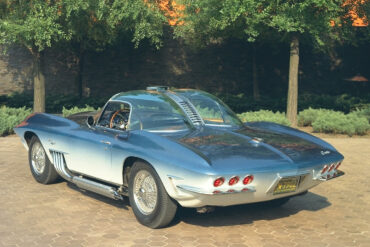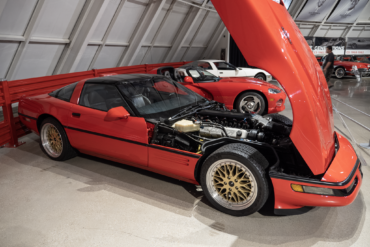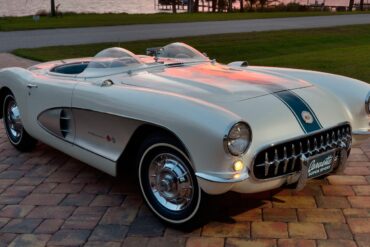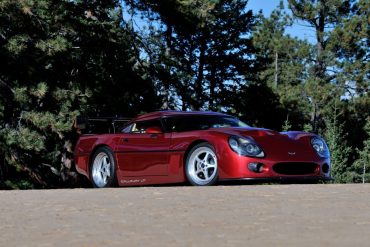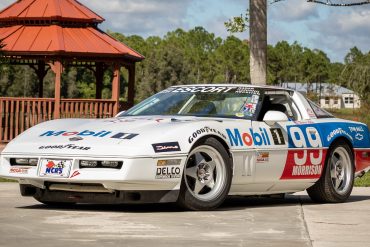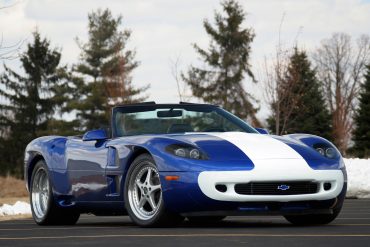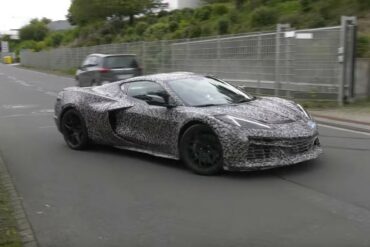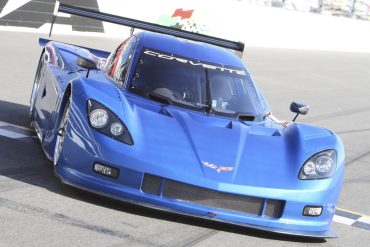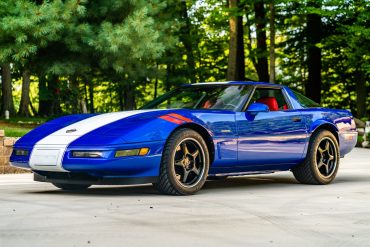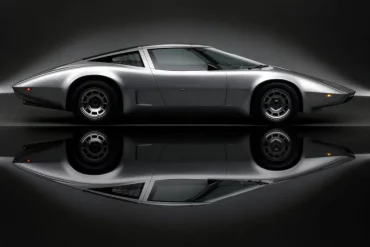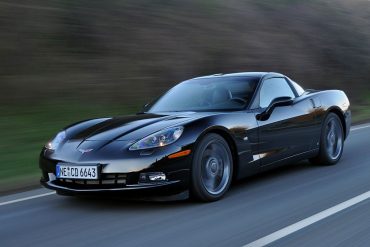The Future of Corvette – A Look Ahead at What’s Next The second decade of the twenty-first century has been...
The 70th Anniversary Edition Corvettes will be unique, even among other 2023 Corvettes, in the following ways: First, the Anniversary Edition cars will be offered in two exclusive color packages - an all-new White Pearl Metallic Tri-coat or a Carbon Flash Metallic. An optional stripe kit will also be offered in complimenting colors - Satin Gray on the Pearl White Metallic, and Black on the Carbon Flash Metallic. The cars will also be fitted with unique-and-distinct wheels with commemorative caps.
As reported by Motor1, right on the heels of the announcement that the Corvette C8 Hybrid is coming as early...
The 2023 Corvette Z06 pace car uses the same 670-horsepower 5.5-liter naturally aspirated V8 as the road-going version. It has the Z07 Performance Package that has additional features like Magnetic Ride Control 4.0 calibrations, carbon-fiber wheels with Michelin Sport Cup 2 R ZP tires, and carbon-ceramic brakes. The pack also adds carbon pieces to the body.
This car was created by Doug Rippie. His claim to fame was the Corvette Challenge Series. Rippie loved racing Corvettes in the US, but, his life-long dream was to take on the world-class marques at Le Mans. So, when Chevy introduced the C4 ZR1 the opportunity was opened up. Via his collaboration with MerCruiser and Lotus Engineering, all with Chevy’s blessing, the "Black Widow" program created special street and race versions of the LT5 engine. This engine made 525hp.
The 70th Anniversary Edition Corvettes will be unique, even among other 2023 Corvettes, in the following ways: First, the Anniversary Edition cars will be offered in two exclusive color packages - an all-new White Pearl Metallic Tri-coat or a Carbon Flash Metallic. An optional stripe kit will also be offered in complimenting colors - Satin Gray on the Pearl White Metallic, and Black on the Carbon Flash Metallic. The cars will also be fitted with unique-and-distinct wheels with commemorative caps.
The Corvette L88 Scuderia Filipinetti Le Mans Racer holds a significant place in Corvette's racing history. With a coil spring front suspension and an L88 engine prepped by Zora Arkus-Duntov and smuggled out the back door to circumvent GM's ban on racing, the L88 was driven at the 1968 24 Hours of Le Mans by Henri Greder and Umberto Maglioli. It dominated the Porsches and led the GT class til 6th hour when carburetion problems melted a piston.
At Sebring in 1967, the Corvette L88 made its debut appearance. The L88 package included many competition components which included a M22 transmission, large disc brakes, upgraded suspension and an alumunim head 427. Shortly after the race, the L88 option would be offered on production cars which was a formidable package.
One of the most beautiful concept cars created by GM was the XP-822 later called the Aerovette. Zora Arkus Duntov and his engineers had originally built two predecessors during 1969. John DeLorean, Chevrolet's general manager, felt the program was too expensive and canceled the car.
Only Bill Mitchell could get away with this. Bill always managed to have a hot daily ride. Engineering prototypes that weren't street-legal stayed behind the fence, but many of the show car Corvettes managed to go home with Bill. His usual statement on his "design study" cars was, "This thing runs like a bear!" For the Mulsanne Bill added, "This is the best Stingray ever."
The Astro II was one of the most significant case studies of Duntov’s outright refusal to let his mid-engine dreams die, and as such, ultimately entered the history books as a precursor to the eventual mid-engine, C8 Corvettes of today. The Astro II was designed in a way that was more representative of the Corvette’s typical styling cues, than that of The Astro I.
Though the first two prototype cars to carry the Astro namesake were relatively well known, the third entry in this conceptual saga was somewhat obscure and significantly more bizarre. At the 1969 Chicago Motor Show, Chevrolet unveiled the Astro III which was a gas-turbine prototype that featured a tricycle wheel arrangement.
The Astro II was one of the most significant case studies of Duntov’s outright refusal to let his mid-engine dreams die, and as such, ultimately entered the history books as a precursor to the eventual mid-engine, C8 Corvettes of today. The Astro II was designed in a way that was more representative of the Corvette’s typical styling cues, than that of The Astro I.
Power and blinding acceleration were the driving forces behind the development of the 1968-1969 Chevrolet Corvette 427. Only 390 1969 Corvettes were built with the famous L89 427 and while the L89 option was chosen 624 times in 1968, it is still a rare beast relative to total production. The 427 CI engine was good for 435 HP and a strong 460 lb-ft of torque making it one of the best-accelerating cars of its time.
The Corvette built for 'Bunkie' Knudsen is a 1963 Chevrolet Corvette styling car known as the "Bunkie" Knudsen Corvette, built for Chevrolet general manager Semon E. "Bunkie" Knudsen. Finished in Rose Pearl with a full-length White racing stripe, it is outwardly distinguished by its chromed header-style pipes.
This 1961 Chevrolet Corvette factory race car possesses a host of rare options and a provenance worthy of the velvet rope treatment at any of the world’s finest auto museums or vintage races. Gulf Oil sponsored and driven to an SCCA B-Production national championship by the likes of Dr. Dick “The Flying Dentist” Thompson and Don Yenko, it stands as one the most successful and important production-based Corvette race cars ever constructed.
The Purple People Eater MKIII is a 1959 Corvette that was literally unbeatable in SCCA B-Production racing in the late 1950s. There were three Purple People Eaters built in 1958 and 1959. The 1959 model, won every race it entered, except the last one, with Jim Jeffords behind the wheel and mechanic Ronnie Kaplan turning wrenches. The car was built by a team at Nickey Chevrolet in Chicago.
Duntov started off with a ‘54 Corvette as his test mule. He knew that accomplishing his goal would require two things: more power and improved aerodynamics. First, he removed the stock windshield and built a small windscreen. A tonneau cover was then added to the passenger side, and a fairing with a long fin was added to the rear deck behind the driver’s head.
When the crankshaft broke on Gary Laughlin’s Ferrari Monza he had had enough. Being the owner of several Chevrolet dealers, he turned to Peter Coltrin to have a few rebodied. Fortunately, they pursued Sergio Scaglietti who made three fastback coupes on the Corvette chassis.
The XP-755 was designed and the prototype was built in the beginning of 1961. Bill Mitchell was very excited about the double-bubble roof, the side exhausts and rear. It is equipped with a single four-barrel carburetor that produces upwards of 425 horsepower. The Corvette XP-755 Concept had a streamlined design, pointed snout and outlandishly future looking elements everywhere. The 1961 Mako Shark I (XP-755) was an early concept.
The Corvette team decided to one-up the Viper with four extra cylinders, they decided on one of Ryan Falconer’s stunning, all aluminum, 600-cubic-inch, 683hp, 680 lb-ft V-12 racing engines. The biggest challenge was the fact that the all-aluminum V-12 engine was 8.8-inches longer than the production Corvette engine. So the front end of the ZR-1 would have to be stretched 8 inches. This test car was named Conan, after his raw, beastlike charisma.
FOR SALE: The Original 1957 Corvette Super Sport Show Car! In the past, we’ve showcased some rare “for sale” Corvettes...
The offspring of collaboration between Corvette performance guru Reeves Callaway and designer Paul Deutschman, the Super Speedster LM is an astonishing step up on the original Speedster, taking full advantage of the ZR1’s Lotus-engineered, all-aluminum DOHC engine and 6-speed manual transmission. One of only three twin turbocharged and intercooled LT5 engines built by Callaway, it delivers a pavement-shredding 766 HP.
The 1990 Escort World Challenge Series Corvette R9G's were only available for one week. Only race teams were allowed to order this very rare Corvette through dealerships. The 1990 Corvette had its own code like the '88 & 89's did, it was dubbed the "R9G" Corvette. The cars were produced for the express purpose of racing in the SCCA World Challenge Series. In 1990, dealers could order cars destined for the World Challenge race series.
To understand why the Guldstrand GS-90 coupe and convertible differ so much, keep in mind that during the course of the C4 development cycle, no ZR-1 convertibles were planned, so the base C4 convertible had to be used in building a GS-90 Nassau Roadster, as it was called. The coupe, however, had the advantage of using the ZR-1 platform right from the get-go.
Rumors regarding the Corvette E-Ray has been around for a very long time. As early as 2015, it has been...
For the 2012 Grand-Am season, Chevrolet was the first to unveil it's new DPG3 bodywork. This Corvette body kit will be built by Pratt & Miller and will be sold to customer teams. These body kits will fit on any existing Coyote, Riley, or Dallara chassis. This Corvette DP will be powered by a 5.0L V8 making 530BHP @ 7,000rpms and 450ft-lbs at 5,500rpms.
Priced at an additional $3250 for the coupe or an additional $2880 for the convertible, the Grand Sport package included exclusive Admiral Blue paint and featured a single white stripe that ran the length of the body as well as two red accent stripes (also known as “Sebring Stripes”) on the driver side front fender. This unique paint scheme was deliberately developed by GM to pay homage to the classic Corvette Grand Sport Racer of the 1960’s.
In 1977, GM chairman Thomas Murphy gave the Aero-vette the green light. It was approved for production, and slated to be released in 1980. Despite being greenlit for 1980 production as the upcoming C4 Corvette, Arkus-Duntov's replacement Dave McLellan decided for a number of reasons (cost and tradition among them) to stick with the Corvette's tried and true front-engine configuration
In addition to the limited-edition Corvette Victory Edition, a second special version of our favorite all-American sports car was introduced in spring, the Corvette Competition. This model, built in limited numbers on the basis of the C6 Corvette, bears strong links to motor sport too, in which the Corvette has proven highly successful. The Corvette Competition was competitively priced and one heck of a package.


